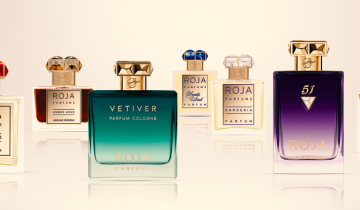Table of Contents
- The Essence of Luxury Minimalism
- Principle 1: Quality over Quantity
- Principle 2: Purposeful Simplicity
- Principle 3: Harmonious Contrast
- Principle 4: Material Elegance
- Principle 5: Thoughtful Curation
- The Art of Luxury Minimalism
Although you may find it hard to believe initially when combined carefully under an approach based on sophistication; luxury and minimalism work harmoniously in creating space for exquisite designs unparalleled in their elegance! Over time these two contrasting visual styles have morphed into what’s now called “luxury minimalist” -a highly sought-after interior decor approach balancing flamboyance with easeful restraint like no other -and we’re thrilled to discuss the 5 foundational elements designers adhere to in creating first-rate spaces exuding sophistication and approachable glamour in this article.
The Essence of Luxury Minimalism
At its core, luxury minimalism is an approach that focuses on curating spaces with careful intentionality. It embraces the notion that less is more, emphasizing quality over quantity and creating environments that evoke a sense of tranquility and sophistication. The approach of luxury minimalism merges the understated elegance of minimalist design – characterized by spare lines, decluttered areas, and subdued tones – with an added layer of refinement. This comes from precise selections of sumptuous materials such as textures plus well-considered embellishments.
Principle 1: Quality over Quantity
In the sphere of luxury minimalism, attention should be paid to being selective when choosing pieces that are both timeless and made from high-quality materials instead of having more quantity yet lessened quality options. This means considering each item’s unique craftsmanship properties since they should be capable enough to withstand various elements over time rather than cluttered up spaces filled with endless objects. Investment towards furniture, fixtures and accessories that exude elegance with a guaranteed durability component creates a sense of allure and refinement that feels exclusive. This approach only affirms the importance of quality over quantity as well as defining exclusivity in your overall design.
Principle 2: Purposeful Simplicity
Simplicity lies at the heart of luxury minimalism. Embrace clean lines, uncluttered spaces, and an overall sense of calm. Each element within a space should have a purpose and contribute to the overall aesthetic. Avoid unnecessary embellishments and opt for simplicity in form and function. By stripping away the superfluous, you allow the essential elements to shine and create a serene environment that exudes luxury.
British minimalist architect John Parwson uses his works to interpret this concept. In his opinion, space, light, proportion and materials are all part of a design. The pursuit of minimalism is his own taste and life principle. He once mentioned that he treats every project as his own, and there must be no redundancy in any part, and it must be concise and sophisticated.
He defined “minimalism” as: “The feeling of perfection that a work of art exudes when its content is reduced to a minimum. When all components of an object, all details, and all connections are reduced to their essence, It will have this characteristic, which is the result of removing non-essential elements.”

Principle 3: Harmonious Contrast
Contrast plays a pivotal role in luxury minimalism, adding depth and visual interest to a space. Seek harmony through the juxtaposition of different materials, textures, and colors. Pair smooth surfaces with rough textures, light tones with darker hues, and soft fabrics with hard surfaces. The careful balance of contrasting elements elevates the design, creating a sense of intrigue and sophistication.
In the current architectural world, the British architect David Chipperfield has the most profound understanding of minimalism, especially in contrast. His understanding of minimalism has gone beyond visual or material minimalism. He is good at using a seemingly simple approach to create a timeless space and experience. The most famous example is the James Simon Gallery he designed on Berlin’s Museum Island. Facing the classical Berlin National Museum, he chose to respond to history with a modern and simple colonnade and used pure white and thick stone to achieve a minimalist and harmonious contrast.

Principle 4: Material Elegance
The choice of materials in luxury minimalism is crucial to evoke a sense of opulence. Opt for luxurious materials that exude elegance and refinement. Incorporate natural elements like marble, wood, and stone to bring warmth and authenticity to the space. Combine them with sleek metals or glass to create a captivating juxtaposition. Thoughtful selection and integration of materials add a touch of luxury to the minimalist foundation.
Principle 5: Thoughtful Curation
Curate your space with intention and thoughtfulness. Select every piece and detail carefully, ensuring they contribute to the overall design narrative. Pay attention to the interplay between objects and the negative space surrounding them. Thoughtful curation allows each element to have its own voice while harmonizing with the broader design scheme. Through careful selection and arrangement, you can create a visually stunning space that embodies luxury minimalism.

The Art of Luxury Minimalism
The concept of luxury minimalism seamlessly blends luxury and simplicity, giving rise to visually appealing yet tranquil spaces. By embracing the five key principles of quality over quantity, purposeful simplicity, harmonious contrast, material elegance, and thoughtful curation, designers can create environments that exude luxury while maintaining a minimalist aesthetic. The art of luxury minimalism lies in the delicate balance between opulence and simplicity, ultimately offering a refined and timeless design approach.
Less is more, and less is also a kind of luxury. If you can truly understand it, you will also understand the art of luxury minimalism and Incorporate luxury minimalism into your design philosophy.



 No products in the cart.
No products in the cart.